There’s another Nod-Krai web event teasing some upcoming lore, so I wanted to immortalize it and take some notes.
Map
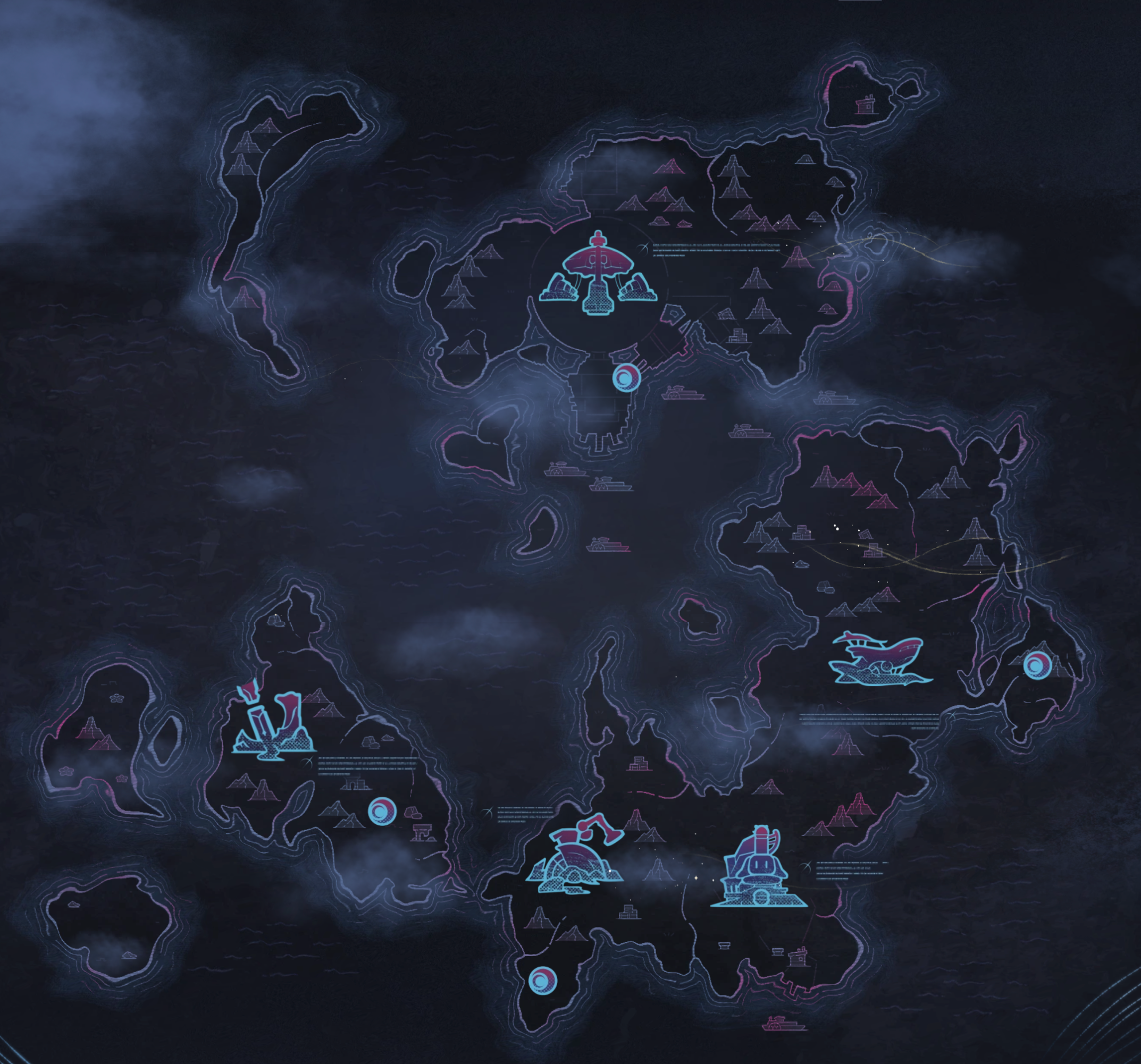
To start, here’s an image of the full map they showed us. If you look closely, you can also see little images depicting houses, boats, and ruins in some areas. I’m especially curious about that one lone house up on the island in the top right corner, pretty far away from anything notable.
Jillian
I’m pretty sure Nod-Krai will be just west of Fontaine. Some of the easternmost parts of the Nod-Krai map look kind of Fontanian to me, and there are already some placeholder islands in the area next to Fontaine and the Sumeru desert that I don’t think would be there if they weren’t planning on putting anything there soon.
We can also at least guess that it will be somewhere north of Natlan, based on Helka’s notes.
The Moon-Enveloped Land
The moonlit land, where those drawn in by various powers wage bitter wars without end.
Paha Isle
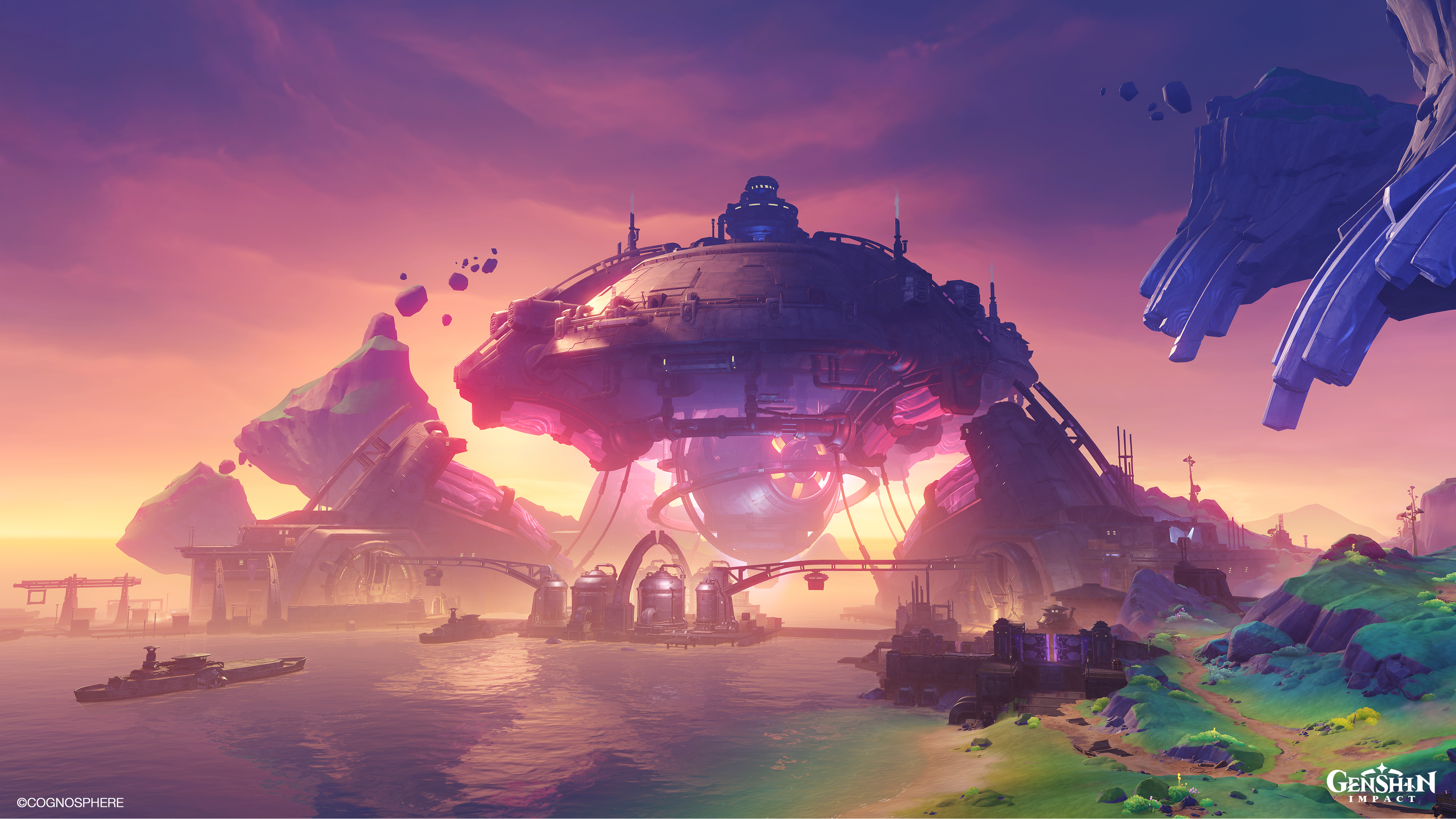
Where the Fatui Assemble: Under the ancient moonlight, the Palestar banner casts a shadow as vast and solem as the northern lands. In the newly established Kuuvahki Experimental Design Bureau, countless mechanisms churn and whir at all hours of night and day.
What rebellious designs does the forge-hammer’s dull thunder conceal? Even their own soldiers stand in ignorance, blind as the anvil…
The forces of Snezhnaya encroach like the winter, and the Fatui sergeants raise aloft the flags of their Harbingers. What is it that they seek?
Jillian
I think it’s interesting that it looks like half of this round workshop thingy they’ve got is underwater or something.
Paha is a type of landform, and also means hill in Dakota Sioux. The other important word here is Kuuvahki, which we’ve heard before in a letter written by someone named Madam Tanya Kovalevskaya that can be found in a Fatui camp in Atocpan:
Dearest Anna. I’ve received your letter, and I know what’s happening back at home.
I’m sorry, but we’ve only just gotten our ancient ruin analysis on track, and I am required to help study the kuuvahki.
Furthermore, the Lord Harbinger has specifically requested that I take charge of said research. This opportunity is hard to come by — I can’t give it up.
And while work here is exhausting, and I often clash with others, at least the researchers all respect me — more so than people do back home, at any rate.
There is also another letter nearby that seems to be giving someone the go-ahead to assassinate Kovalevskaya on her way back home. Not sure what that’s about, but these letters both hint that Dottore had people in Natlan — and more specifically in Atocpan, which is littered with ancient dragon stuff — studying “the kuuvahki.” From the wiki:
Kuuvahki appears to be a portmanteau of the Finnish words kuu “moon” + väki “power; people”. In Finnish mythology, väki is a type of supernatural power which resides in all things.
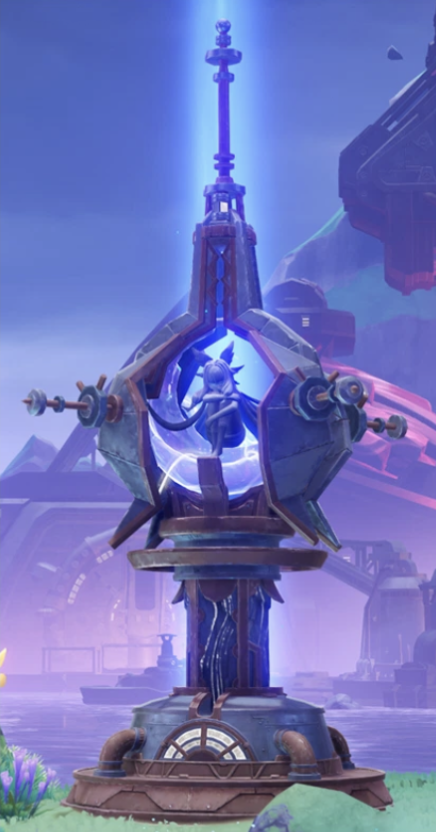
The idol of the New Moon, carved by the scions of the far north, now lies caged in a prison of steel. Do they wish to harness its power? Or simply display Snezhnaya’s unparalleled dominance?
So! This looks pretty clearly like a statue of Columbina, in the style of the Statues of the Seven. Except this one has a whole mechanism around it that probably is, like the text suggests, harnessing its power.
Jillian
I just can’t wait to find out how it’s possible for Columbina to only be the third-ranked Harbinger if she’s basically an undeclared archon.
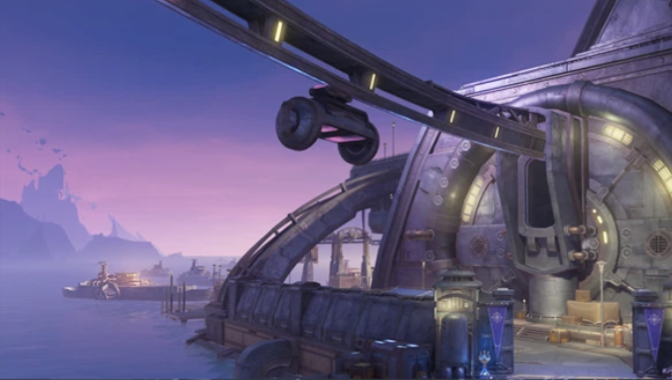 Last-minute addition: you can see Ochkanatlan in the back of this photo.
Last-minute addition: you can see Ochkanatlan in the back of this photo.
Hiisi Island
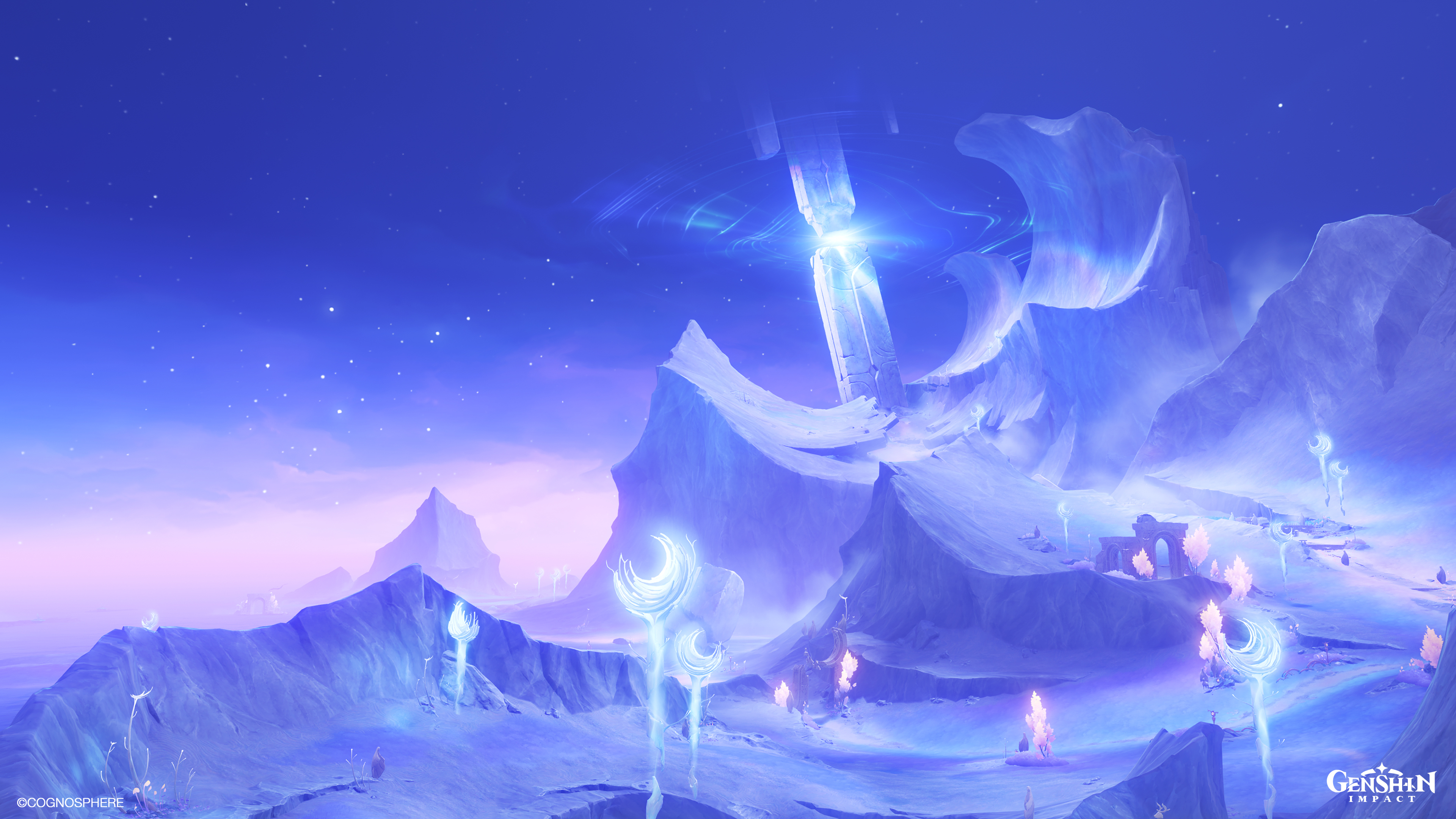
Remnants of the Moonlit World: The remnants of the far north still dwell among the ashen woods and tundras. Their golden city has long since turned to ash, their distant ancestral homeland consumed by the court of creation. Yet these proud descendants light primordial lanterns against the pitch darkness of a withering tide, spinning distant ancient hymns, praying for the New Moon’s protection.
Hiisi is a term seen in different Finnic mythologies that can mean many different things, but generally refers to sacred or magical sites. Since Hiisi Island is where the Frostmoon Scions now live, after leaving their golden city of Hyperborea, the name fits.
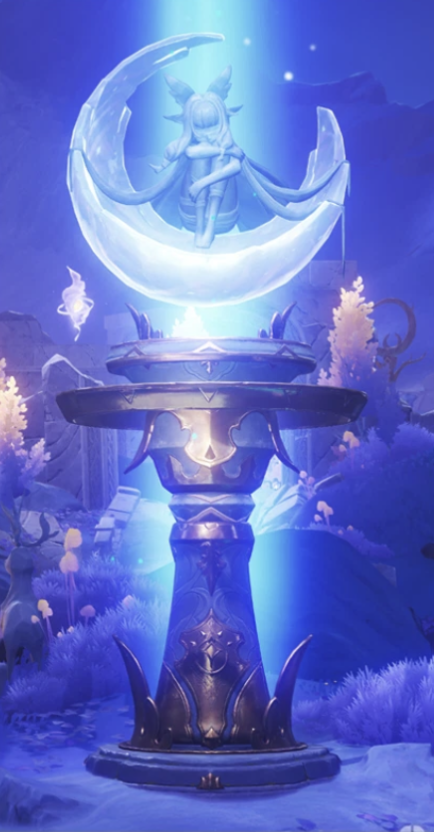
For five centuries, generations of Moonchanters have followed the commandments left by the first leader of the Frostmoon Scions, guiding their devotees to uphold benevolence and faith, striving to avoid conflict with outsiders at all costs. Yet with the arrival of the Fatui, the Scions’ long-held tranquility — and their endless supplications to their goddess — may now give way to creeping twilight doom…
There’s the Columbina statue again, without its cage (and a new oculus type behind it!). I wonder if these were originally statues for a different archon that the Scions repurposed. We don’t really have any concrete information about where the Statues of the Seven come from, although we do know that they change to reflect the appearance of the current archon.
The most interesting thing here: the Frostmoon Scions were only founded 500 years ago, either during or after the cataclysm. But Hyperborea is probably much more ancient than that. Judging by the ruins on Hiisi Island, and the story about Ajax stumbling into what sounds like the Hyperborea ruins in Ballad of the Fjords, I think they relocated sometime during the Funerary Year (which Nicole also mentioned in Moonlit Ballad of the Night).
Nasha Town
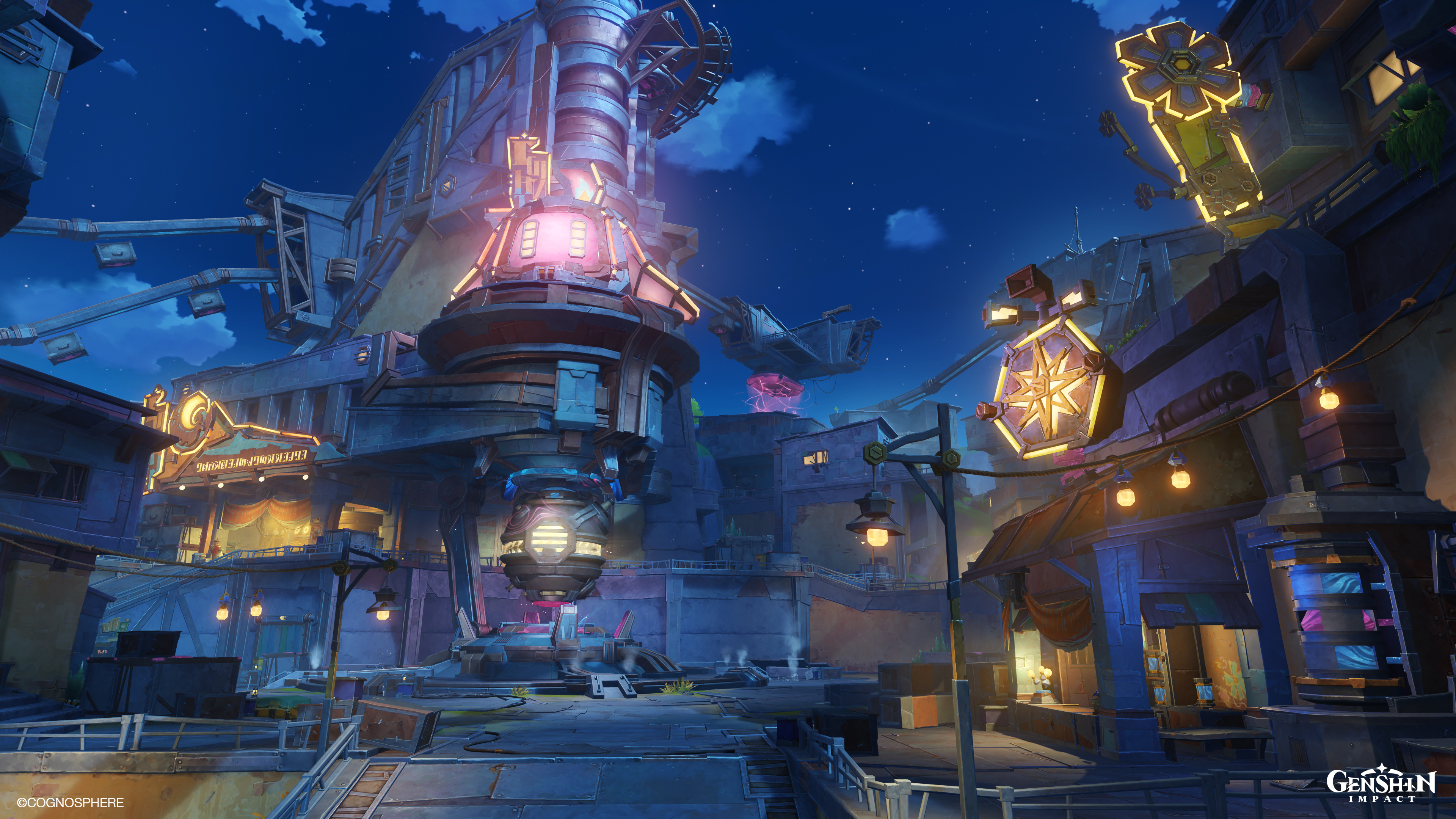
Elysium Revelry for Explorers: No matter where you’re from, no matter where you stand in society, and no matter how much Mora you have to your name — this is a paradise for those whose hearts are filled with hope. Riches, lies, schemes, and sincerity surge beneath the same quilt of raucous laughter. As Nod-Krai’s most prosperous trading port, the first lesson newcomers learn here is always the same: “Keep your Mora close to your chest.”
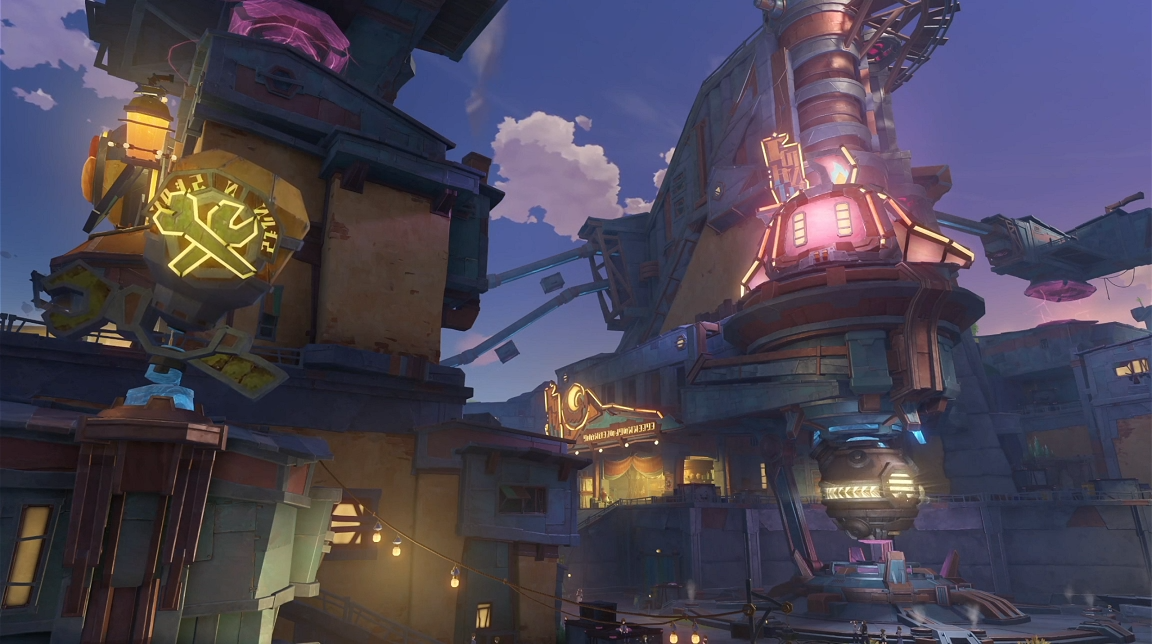
You wish to buy a weapon? Absolutely, this is Nod-Krai’s second-best forge! Why second-best, you ask? Well, if you meet Aino, I’m sure it’ll be pretty clear…
You can buy anything you want here, as long as you can pay the price. I hear you’re looking for some extraordinary treasure? Then you’ve come to the right person. My friends and helpers in these lands are numerous indeed.
Ad astra aby… Want to learn more about the latest commissions? If you really want something worth the risk, you’ll need a little luck on your side.
Psst… Just a little warning. The grown-ups here are sneaky and love ripping off passing adventurers. Hmm? You wanna know if kids can be trusted? Well, heehee, you’ll just have to find out, won’t you?
Nasha Town is the place Liben told us about, where he absolutely got scammed by the Voynich Guild. This is clearly the main city, where the Adventurer’s Guild and forge will be.
The name Nasha probably comes from наш, which means our — so it’s “our town.” Cute.
Blue Amber Lake

Those look like the mountains of Fontaine in the back on the left, and the mountains of the Sumeru desert on the right. This ship also reminds me a lot of the Rusty Rudder and Poisson, although it’s not really the same style of ship that they have in Fontaine.
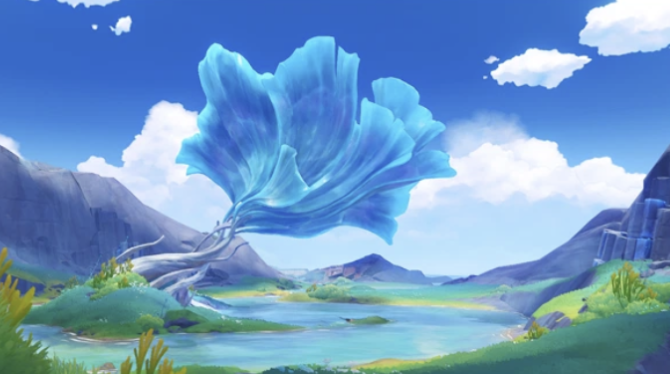 This, just east of Blue Amber Lake, is very much giving the vibe of a tree that grew after some divine being died there or something.
This, just east of Blue Amber Lake, is very much giving the vibe of a tree that grew after some divine being died there or something.
Lempo Isle
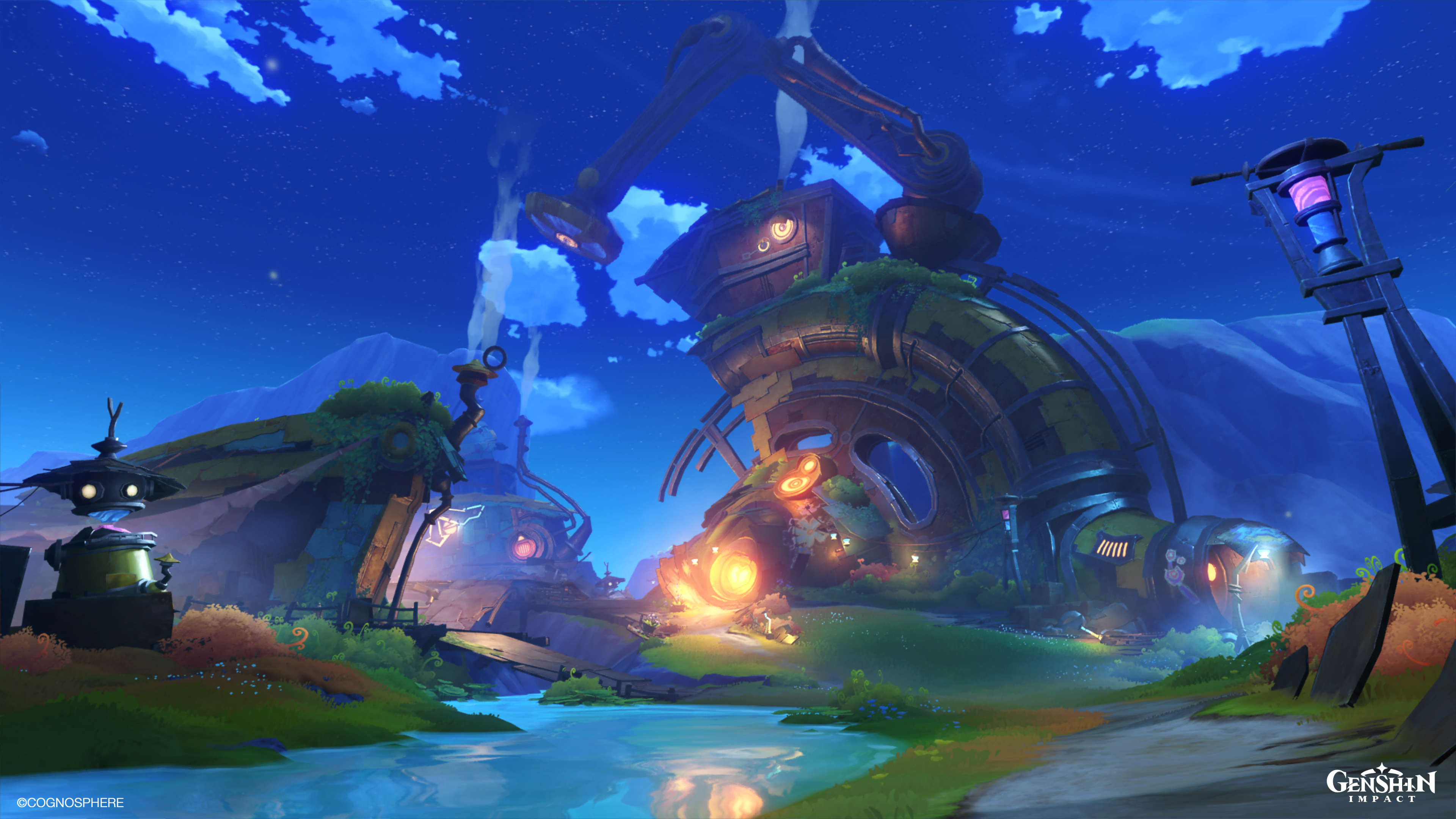
Lempo is the name of “a fiend in Finnish folklore.” Great phrase. Lempo seems to be connected to themes of love (or lust) and fire, which is very interesting but admittedly doesn’t give me many clues about this location.
However! I did find this, to tie the three islands in Nod-Krai together:
Lempo brought down the hero Väinämöinen with the help of his two demon cohorts, Hiisi and Paha.
Väinämöinen is the hero of the Kalevala, which seems to be a big running source of inspiration for Hoyo.
Jillian
This is really not the time or place to get into it, but this also led me down a bit of a rabbit hole because there’s a story that says Väinämöinen’s father is Kave-Ukko, Lord of the North. Yes, like Kaveh. I don’t know what to do with this information.
This is also a fantastic time to bring Ukko up again, since he’s named after a Finnish god. Sal Vindagnyr is always relevant!
The presence of the Abyss grows…
The pitch-dark withering tide whispers amidst the silence of frigid nights, awaiting its moment to rend the ever-thinning veil and devour those frail souls whole. In the shadow where “rules” cannot reach, even “death” is no respite from torment.
That “ever-thinning veil” is the same one Columbina mentioned in Moonlit Ballad of the Night: “The veil of lies is slipping.” Assuming this veil is the false sky, it would make sense that Alice 1 is in Nod-Krai.
The mention of the “rules” and “death” seems like it’s about the Shades.
About Nod-Krai
In the age when the seven lights of the firmament had not yet shone upon the land, the now-nameless ruler rose the heavenly moons to govern the cyclical tides of the world in their stead.
The remnants that failed to become a moon slumbered in the vast sea — only to become, at last, the refuse of the exiles of the far north.
Neither the withering tide of darkness nor the mad monk who spoke in strange tongues could break this land’s spine. Yet now, beneath the New Moon, calamity stirs once more to drown the world in its maw…
As far as we know, the three moons definitely predate the Primordial One. Based on that, and this mural in Natlan, I assume the “now-nameless ruler” mentioned here is Nibelung.
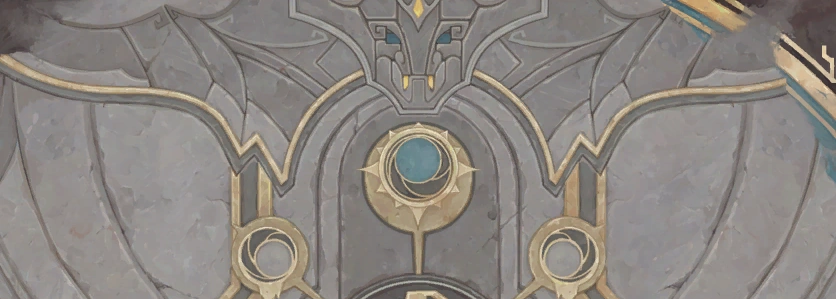
But now we have these “remnants that failed to become a moon” — does that mean there was supposed to be a fourth moon? And the pieces of that fourth moon became the islands of Nod-Krai?
The “mad monk” mentioned here is also in Long Night’s Oath:
And in a bid to seize the power that had been forsaken by the Welkin Moon, a sorcerer who spoke in strange tongues presented a treacherous plot to the Tsar of all spirits.
Mentioning the land’s “spine” and “its maw” is making me picture the New Moon as a slumbering dragon inside an egg. If we think of all the moons as eggs, falling down and cracking open was surely what they were always meant to do.
Footnotes
-
According to Skirk’s voice lines, Alice is the “Sustainer of the World’s Borders.” She clearly has plenty of experience with creating and sustaining worlds, as we’ve seen in all our little summer adventures. ↩